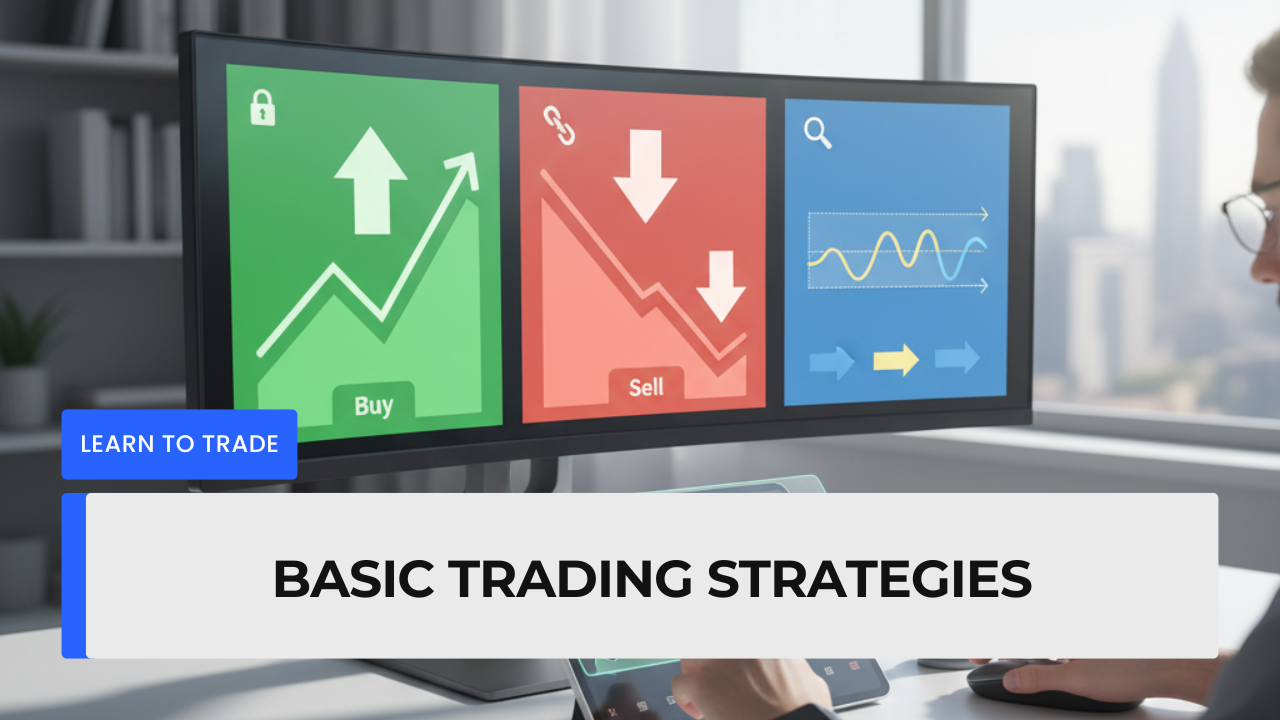Learn the Core Forex Techniques Every New Trader Should Know
Starting in forex trading can feel overwhelming, but it doesn’t have to be.
Every successful trader begins with a few core strategies — simple, reliable methods that help them understand how price moves and where opportunities exist.
At Holo Forex, we believe that mastering the basics is the key to long-term success.
Here are three beginner-friendly trading strategies you can start practicing today: trend following, support and resistance, and breakout or range trading.
1. Trend Following — Trade with the Market Flow
One of the oldest and most trusted forex strategies is trend following.
The idea is simple: “Trade in the direction of the trend.”
When the market is trending upward, you look for opportunities to buy.
When it’s trending downward, you look for chances to sell.
How to Identify a Trend
Uptrend: Higher highs and higher lows
Downtrend: Lower highs and lower lows
Use tools like Moving Averages (MA) or Trendlines to confirm direction
Example:
If EUR/USD keeps forming higher highs over several days, that indicates an uptrend. A trader might buy when the price pulls back slightly, expecting the trend to continue.
Tools You Can Use
Moving Averages (50, 100, or 200-period) for long-term trend direction
RSI or MACD indicators for confirmation
Trendlines to visualize the general price direction
Best for: Beginners who want to trade with momentum instead of guessing reversals.
Tip: Don’t fight the trend. Even the best traders lose money trying to predict when it will end.
2. Support and Resistance — The Foundation of Price Action
Support and resistance are key price levels where the market tends to pause, reverse, or bounce.
Understanding them helps traders identify entry and exit points with better accuracy.
Support
Support is a price level where buyers step in and stop the market from falling further.
It’s like a “floor” that holds the price.
Example:
If EUR/USD repeatedly bounces around 1.0850, that level becomes support.
Resistance
Resistance is a price level where sellers enter and stop the price from rising higher.
It’s like a “ceiling” that caps the movement.
Example:
If EUR/USD keeps failing to break above 1.0950, that area becomes resistance.
How to Trade Support and Resistance
Identify key levels on higher timeframes (H4 or Daily).
Wait for price to test those levels.
Look for reversal signals (candlestick patterns or indicator confirmation).
Place trades with stop-loss below support (for buys) or above resistance (for sells).
Best for: Traders who like technical analysis and structured setups.
Tip: Support and resistance zones are not exact prices — think of them as “areas” rather than single lines.
3. Breakout and Range Trading — Catch the Big Moves
Sometimes the market moves sideways between two levels (a range) before eventually breaking out.
Recognizing and trading these situations can be highly profitable when done right.
A. Range Trading
Range trading means buying at support and selling at resistance while the market moves sideways.
You profit from the oscillation between the two levels.
Example:
If GBP/USD has been bouncing between 1.2500 (support) and 1.2600 (resistance), you can buy near 1.2500 and sell near 1.2600.
Best for: Stable, non-volatile markets.
B. Breakout Trading
A breakout occurs when price finally moves outside of a range — either above resistance or below support.
It signals a potential start of a new trend or a strong price movement.
Example:
If GBP/USD breaks above 1.2600 after days of sideways trading, it could indicate the start of a bullish trend.
Best for: Traders who want to catch large moves early.
Tip: Wait for a confirmed breakout (with strong volume or candle close) to avoid false signals.
4. Combining These Strategies
The best traders often combine multiple strategies to increase accuracy.
Example Combo:
Use trend following to identify direction.
Find support and resistance zones within that trend.
Enter on a breakout aligned with the overall direction.
This structured approach helps filter bad trades and align with high-probability setups.
5. Which Strategy Should You Start With?
| Strategy | Difficulty | Time Needed | Risk Level | Suitable For |
|---|---|---|---|---|
| Trend Following | Easy | Moderate | Medium | Beginners learning direction-based trading |
| Support & Resistance | Moderate | Flexible | Medium | Analytical traders |
| Range & Breakout | Intermediate | Moderate | Medium–High | Action-focused traders |
Tip: Start with one strategy on a demo account before combining them.
Master the rules and build confidence before trading live.
Key Takeaways
Trend following helps you trade with momentum, not against it.
Support and resistance levels reveal where price may pause or reverse.
Breakout and range trading help you catch either steady or explosive moves.
Combining strategies improves accuracy and consistency.
Final Thoughts
Forex trading doesn’t have to be complicated.
By focusing on simple, proven strategies — like trend following, support and resistance, and breakout setups — you build the foundation for consistent growth.
At Holo Forex, we help beginners turn knowledge into confidence.
Because every successful trader starts with one thing: a solid strategy.


